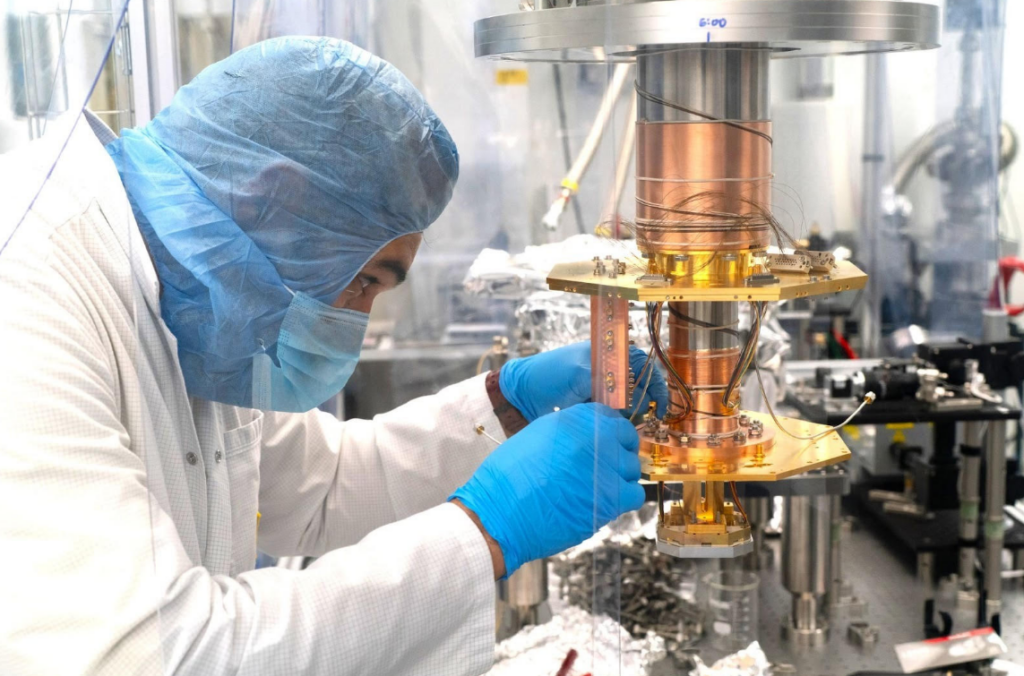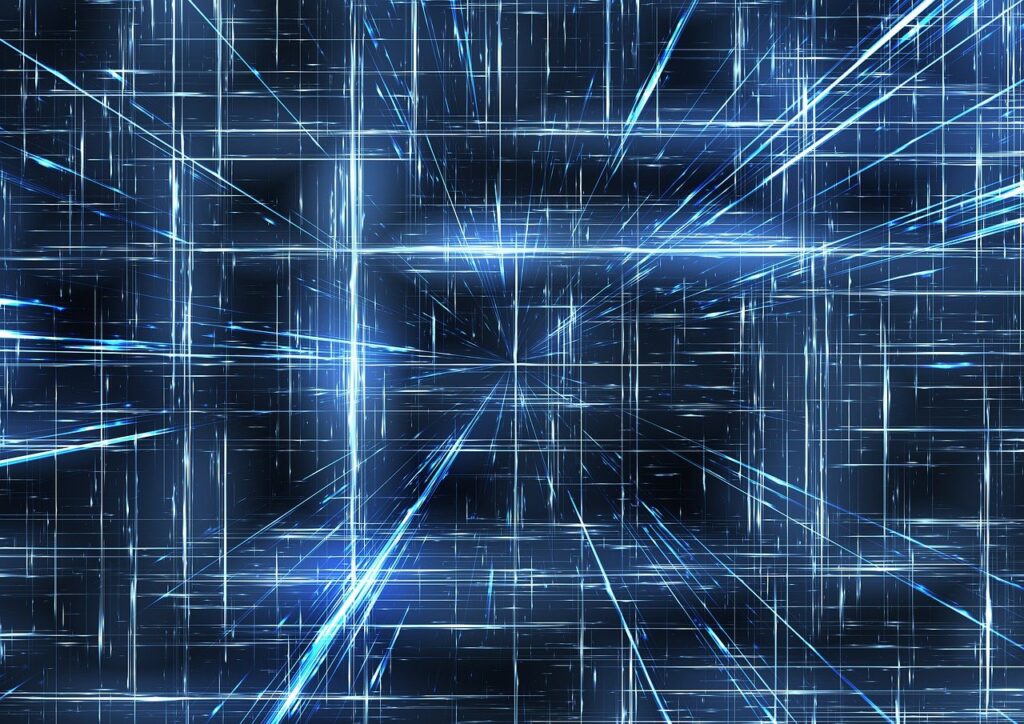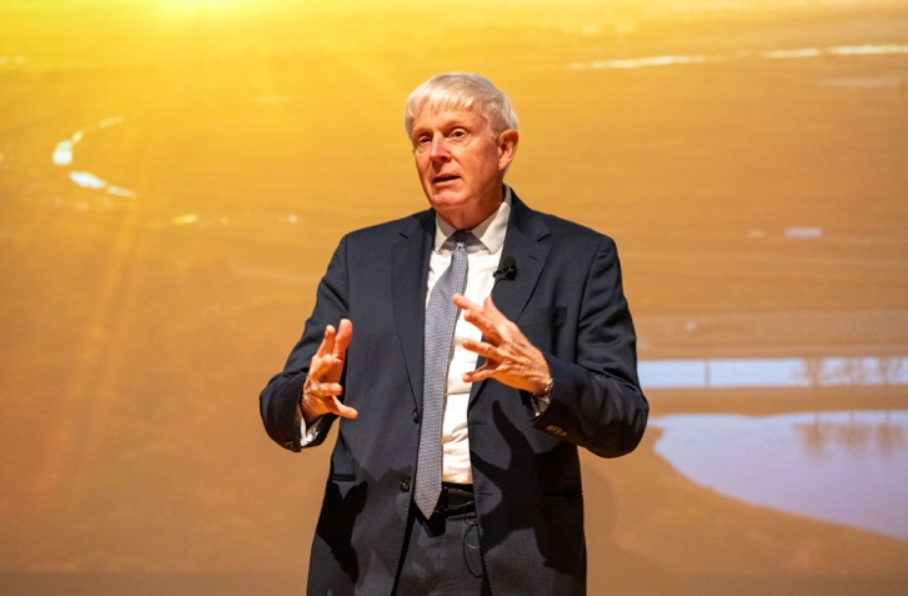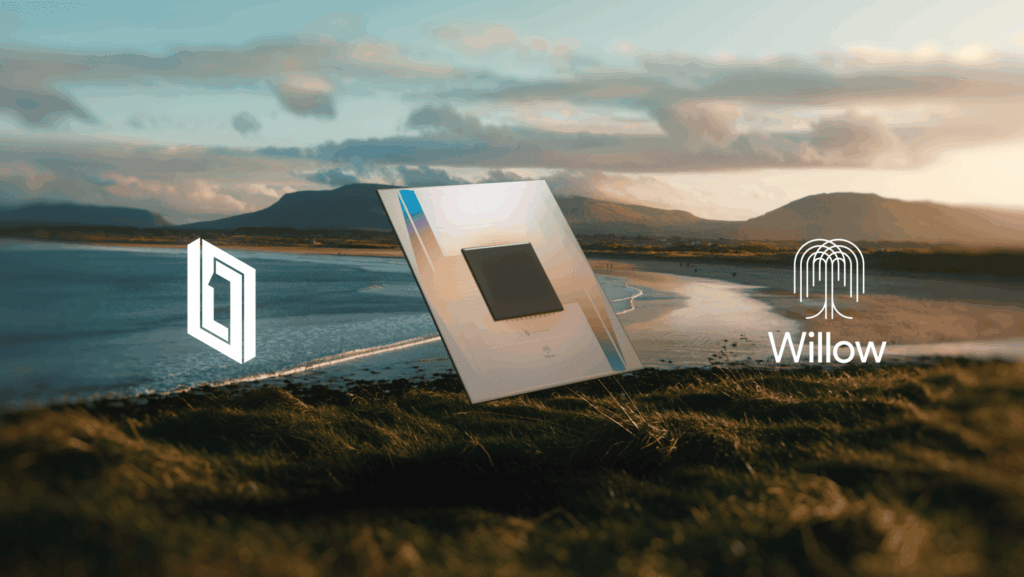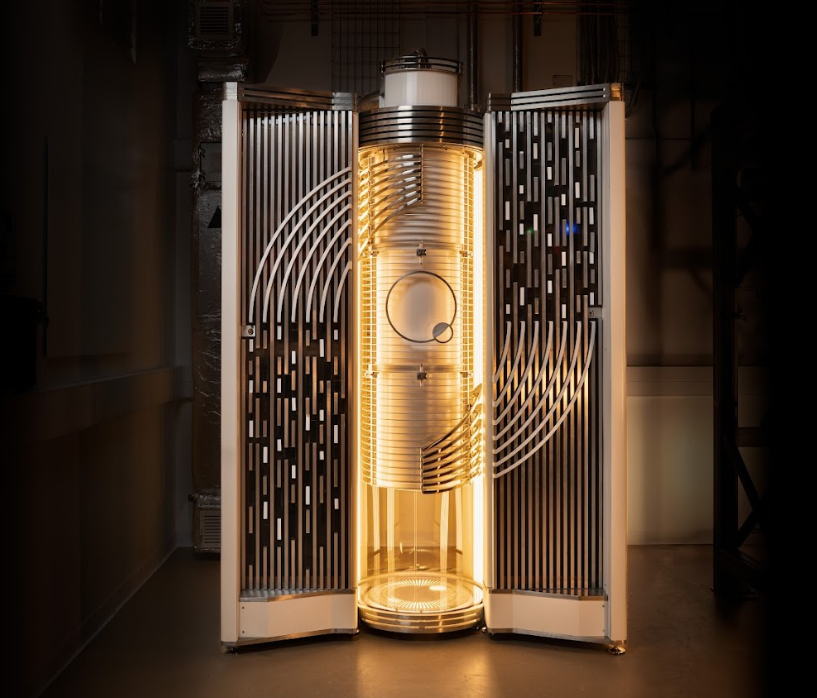Insider Brief
- An MIT-led team added physics-based constraints (SCIGEN) to diffusion AI models to generate quantum-relevant crystal lattices at scale, yielding >10M candidates and two synthesized compounds with exotic magnetism—promising a faster path to qubit-grade materials.
- Steering models to Kagome, Lieb and Archimedean lattices linked to spin liquids and flat bands focused the search: ~1M passed stability, 26k were simulated at Oak Ridge, and ~41% showed predicted magnetism.
- For quantum computing, the method broadens credible material leads for error-resistant qubits while requiring lab validation and planned chemical/functional constraints, with the DOE/NSF-funded study reported in Nature Materials.
An MIT-led team reports their research that shows adding simple design rules to popular AI generators can rapidly surface materials to benefit quantum computing, producing millions of candidates and two lab-made compounds with exotic magnetism.
Funded by the U.S. Department of Energy and the National Science Foundation, and using Oak Ridge National Laboratory supercomputers, and published in Nature Materials, the work targets a research bottleneck, according to MIT.
Off-the-shelf AI models can propose vast numbers of stable compounds, but they seldom hit the narrow crystal patterns that give rise to superconductivity or unique magnetic states, researchers note. The MIT group’s fix is straightforward: tell the model, at every step, to obey specific geometric constraints known to foster quantum behavior. That change shifts the search from quantity to fit.

The study, led by MIT’s Mingda Li with collaborators at Emory University, Michigan State University, Oak Ridge, and Princeton University, reports a software layer called SCIGEN that “sits on top” of diffusion models, a common AI method that refines noise into realistic outputs. SCIGEN blocks any interim structure that violates the user’s rules. In materials terms, those rules describe target lattices—regular atomic patterns such as triangular, Kagome, or Lieb nets—that often host unusual electron behavior.
Methods
- Used SCIGEN to constrain AI materials generation model DiffCSP to generate families of Archimedean lattices, collections of 2D lattice tilings of different polygons that can lead to quantum phenomena.
- The pipeline generated more than 10 million candidate materials that met the requested patterns. About 1 million candidates passed an initial stability filter.
- A focused set of 26,000 structures underwent high-fidelity simulations on Oak Ridge supercomputers. Roughly 41% of that simulated set showed predicted magnetic behavior.
- Partners at Michigan State and Princeton synthesized two new compounds—TiPdBi and TiPbSb—whose measured properties broadly matched model forecasts.
“Archimedean lattices give rise to quantum spin liquids and so-called flat bands, which can mimic the properties of rare earths without rare earth elements, so they are extremely important,” Mouyang Cheng, MIT PhD student and a co-corresponding author of the work, pointed out. “Other Archimedean lattice materials have large pores that could be used for carbon capture and other applications, so it’s a collection of special materials. In some cases, there are no known materials with that lattice, so I think it will be really interesting to find the first material that fits in that lattice.”
Researchers noted quantum spin liquids could provide stable, error-resistant qubits for quantum computing, but none have been experimentally confirmed to date.
Methods were designed to balance speed and realism, researchers said. First came rule-constrained generation. Next, basic thermodynamic checks to avoid obviously unstable structures. Then density-functional-theory-level calculations to probe electronic and magnetic traits tied to quantum effects. Finally, synthesis and measurement for a small number of targets to confirm that at least part of the pipeline survives contact with the lab.
The authors emphasize that this is not a new model so much as a new way to steer existing ones. Diffusion models learn the statistical patterns of known materials and then generate similar structures. Left alone, they tend to favor stability because training data are full of stable crystals. SCIGEN introduces physics-informed rules into the loop. The result is a shortlist of proposals already aligned with the lattice types that excite quantum researchers.
Why It Matters
Quantum materials often depend more on crystal shape than on specific elements. Triangular and Kagome lattices, for example, can keep electron spins in constant motion even at low temperatures, a state called a quantum spin liquid. That kind of phase could make more stable building blocks for quantum computers. Researchers have identified only a handful of credible candidates after years of work. By generating large numbers of “right-shaped” structures, the MIT-led approach gives experimentalists many more shots on goal.
“People in the quantum community really care about these geometric constraints, like the Kagome lattices that are two overlapping, upside-down triangles,” Li pointed out. “We created materials with Kagome lattices because those materials can mimic the behavior of rare earth elements, so they are of high technical importance.”
A Collaborative Effort
Attribution for key steps is clear across the collaboration. The constraint framework and study design came from MIT and its Computer Science and Artificial Intelligence Laboratory affiliates. Large-scale simulations ran on Department of Energy resources at Oak Ridge. Synthesis and lab validation were carried out at Michigan State and Princeton. An outside perspective from Drexel University, cited in the paper, notes that a rules-driven tool like this can speed discovery of unfamiliar materials for next-generation electronics, magnetics, and optics—again underscoring the potential beyond quantum computing.
“There’s a big search for quantum computer materials and topological superconductors, and these are all related to the geometric patterns of materials,” Weiwei Xie of Michigan State University said.
Robert Cava of Princeton University added that progress has been slow. “Many of these quantum spin liquid materials are subject to constraints: They have to be in a triangular lattice or a Kagome lattice,” Cava said. “If the materials satisfy those constraints, the quantum researchers get excited; it’s a necessary but not sufficient condition. So, by generating many, many materials like that, it immediately gives experimentalists hundreds or thousands more candidates to play with to accelerate quantum computer materials research.”
The authors said lab validation remains essential to confirm AI-generated materials can be synthesized and that their real properties match model forecasts. Next steps for SCIGEN include adding more design rules, such as chemical and functional constraints, to refine and broaden the search, according to MIT.











